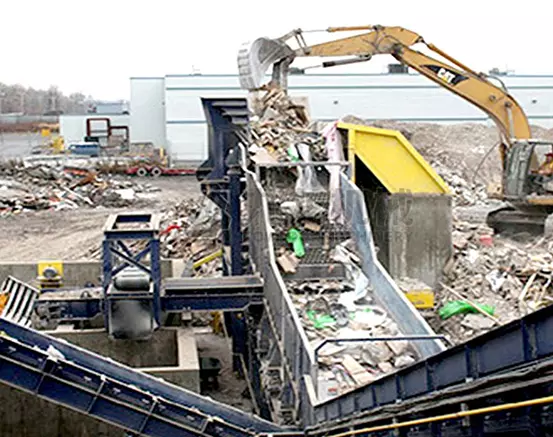2024.05
How to screen and sort Household waste? For the promotion of dual carbon policy and zero-waste city, the disposal of Household waste must be solved, and its disposal solutions currently include landfill, incineration and resource disposal. In the zero-waste city, it is mentioned that the source reduction and resource utilization of solid waste will be continuously promoted, so the resource disposal of Household waste has been pushed to a high tide. This article shares with you some sorting equipment for Household waste. Original Household waste is generally packed in bags. After rough crushing, the follow-up is a series of sorting steps, and then enters the subsequent disposal process. 1. Manual sorting platform This step is mainly composed of a belt conveyor and a manual sorting platform. It mainly selects recyclables and other items that need to be handled separately before the material is screened and crushed too fine. 2. Permanent magnetic iron remover Mainly recycles the magnetic metals in the material for reuse. 3. Drum screen Screen small particles such as slag and other materials. 4.Wind separator Separate light and heavy materials, and re-screen the light materials that have not been screened pure at the front end, and obtain materials...
2024.05
Types and preparation of RDF alternative fuels At present, the term “alternative fuel” has become popular in the environmental circle, and environmentalists are extremely interested in it. However, many friends may not know much about alternative fuels. First, let’s understand the classification of alternative fuels. American ASTM RDF classification: ①RDF-1 is only combustible solid waste obtained by removing bulky waste from municipal solid waste; ②RDF-2 removes metal and glass from municipal solid waste and coarsely crushes it through a 152m sieve to obtain combustible solid waste (crude RDF/C-RDF); ③RDF-3 removes metal and glass from municipal solid waste and crushes it through 50mm to obtain combustible solid waste (velvety RDF/F-RDF); ④Powder RDF-4 removes metal and glass from municipal solid waste and crushes the combustible solid waste (powdered RDE/P-RDF) obtained after passing 1.83mm screening; ⑤RDF-5 is a combustible solid waste (fine RDF/D-RDF) obtained by sorting out non-combustible materials such as metal and glass from municipal solid waste, crushing, drying, and processing into shapes; ⑥RDF-6 processes municipal solid waste into liquid fuel (Liquid Fuel/liquid fuel); ⑦RDF-7 processes municipal solid waste into gaseous fuel. The most widely used in the domestic market is RDF-5, and it is also the alternative fuel that attracts the...
2024.05
How to choose decoration waste disposal equipment? According to the national economic development plan, it is proposed that the comprehensive utilization rate of construction and decoration waste should reach 60% by 2025 (the comprehensive utilization rate in 2020 is 50%). It is necessary to carry out a demonstration project for the resource utilization of construction and decoration waste and build 50 construction and decoration waste resources. Utilization demonstration city. Therefore, in recent years, local governments have attached great importance to the disposal of construction and decoration waste, and construction and decoration waste projects can often be seen in various places. After more than ten years of development, construction waste treatment technology and models have actually become mature. At the same time, because the composition of construction waste is relatively simple, the treatment process is not that complicated. However, because of the complex composition of decoration waste, the treatment methods are also complicated. Let’s first take a look at the composition of decoration waste. Decoration waste is usually bagged garbage, which is mainly composed of inorganic inert materials, with more light materials (including plastics, wood, fabrics, etc.); inorganic inert materials include bricks and air-entrained blocks. Mainly, accounting for about 50%; the...


